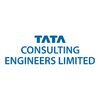Filter interviews by
Vaaman Engineers Mechanical Engineer Interview Questions, Process, and Tips
Vaaman Engineers Mechanical Engineer Interview Experiences
3 interviews found
- Q1. What is the preventive maintenance?
- Ans.
Preventive maintenance is a proactive approach to maintaining equipment to prevent failures and extend its lifespan.
Involves regular inspections and servicing of equipment.
Examples include oil changes in vehicles and lubrication of machinery.
Helps identify potential issues before they lead to breakdowns.
Can reduce overall maintenance costs by avoiding major repairs.
Scheduled maintenance tasks can be based on time inter
- Q2. What is belt drive?
- Ans.
A belt drive is a mechanical system that transmits power between shafts using flexible belts.
Consists of pulleys and a belt that connects them.
Commonly used in vehicles for power transmission (e.g., serpentine belts).
Can be classified into open and crossed belt drives.
Used in machinery like conveyor systems and lathes.
Advantages include smooth operation and reduced vibration.
- Q3. How many types of gear box?
- Ans.
There are several types of gearboxes, each designed for specific applications and performance requirements.
1. Manual Gearbox: Common in cars, allows driver to change gears manually.
2. Automatic Gearbox: Automatically changes gears based on speed and load, used in most modern vehicles.
3. Continuously Variable Transmission (CVT): Provides seamless acceleration without distinct gear shifts, found in some hybrids.
4. Dual-C...
- Q4. What is the main reason for the break down?
- Ans.
Breakdowns can occur due to mechanical failure, human error, or environmental factors affecting system performance.
Mechanical failure: Wear and tear of components, e.g., a broken gear in a gearbox.
Human error: Incorrect assembly or operation, e.g., improper torque settings leading to joint failure.
Environmental factors: Extreme temperatures causing material fatigue, e.g., metal components cracking in cold weather.
Lack ...
- Q5. How to solve the break down?
- Ans.
To solve a breakdown, identify the cause, analyze the situation, implement solutions, and monitor results for effectiveness.
Identify the root cause: Use tools like the 5 Whys or Fishbone Diagram to pinpoint the issue.
Analyze the situation: Gather data on the breakdown, such as operating conditions and maintenance history.
Implement solutions: Develop a plan to address the cause, such as repairing equipment or changing p...
(1 Question)
- Q1. Tell something about yourself
Interview Preparation Tips
I applied via Referral
(1 Question)
- Q1. About Bearing types
Mechanical Engineer Jobs at Vaaman Engineers
Top trending discussions






Interview questions from similar companies

Mechanical Engineer Interview Questions & Answers
Power Mech Projectsposted on 26 Jul 2021
Interview Questionnaire
1 Question
- Q1. Tell about chiller& AHU
- Ans.
A chiller is a machine that removes heat from a liquid via a vapor-compression or absorption refrigeration cycle. An AHU (Air Handling Unit) is a device used to regulate and circulate air as part of a heating, ventilating, and air-conditioning (HVAC) system.
Chillers are commonly used in commercial and industrial buildings to cool water or other fluids for air conditioning or process cooling.
AHUs are responsible for con...

I applied via Company Website
Interview Questionnaire
1 Question
- Q1. Vogele paver screed function & Temper / pressure bar applications, difference between Diesel Engine BS iv & BS VI.
- Ans.
Answering questions on Vogele paver screed function and diesel engine BS iv & BS VI
Vogele paver screed function involves leveling and compacting asphalt or concrete surfaces
Temper/pressure bar applications involve adjusting the temperature and pressure of the screed to achieve desired results
BS IV and BS VI are emission standards for diesel engines, with BS VI being more stringent and requiring advanced technology to r...
Interview Preparation Tips

Mechanical Engineer Interview Questions & Answers
Megha Engineering & Infrastructuresposted on 17 Nov 2021
I applied via Campus Placement and was interviewed before Nov 2020. There were 3 interview rounds.
Interview Questionnaire
6 Questions
- Q1. What is gear and its types?
- Ans.
Gears are mechanical components that transmit power and motion between rotating shafts. There are various types of gears.
Spur gears are the most common type and have straight teeth.
Helical gears have angled teeth and provide smoother operation.
Bevel gears transmit power between shafts that are not parallel.
Worm gears have a screw-like thread and are used for high reduction ratios.
Planetary gears have a central gear tha...
- Q2. Describe stress and strain with its diagram?
- Ans.
Stress is the force applied per unit area, while strain is the deformation caused by stress.
Stress is measured in units of force per unit area, such as pounds per square inch (psi) or newtons per square meter (N/m²).
Strain is the ratio of the change in length or shape of an object to its original length or shape.
Stress and strain are related by the material's modulus of elasticity, which is a measure of how much the ma...
- Q3. How Bauxite convert into aluminium?(accordingly my internship during b.tech)
- Q4. What is centrifugal pump and its types?
- Ans.
A centrifugal pump is a mechanical device that uses centrifugal force to transport fluids. There are two types: radial and axial.
Centrifugal pumps are commonly used in industrial and domestic applications.
Radial pumps have a volute casing and are used for low flow and high head applications.
Axial pumps have a propeller and are used for high flow and low head applications.
Centrifugal pumps are easy to install and mainta...
- Q5. What is SI and CI engine?
- Ans.
SI and CI engines are types of internal combustion engines used in vehicles and machinery.
SI engine stands for Spark Ignition engine, also known as gasoline engine.
CI engine stands for Compression Ignition engine, also known as diesel engine.
SI engines use a spark plug to ignite the fuel-air mixture, while CI engines use compression to ignite the fuel.
SI engines are commonly used in cars, motorcycles, and small machine...
- Q6. What is knocking?
- Ans.
Knocking is a phenomenon where the air-fuel mixture in the engine cylinder ignites spontaneously before the spark plug fires.
Knocking is also known as detonation or pinging.
It can cause engine damage if not addressed.
It occurs when the air-fuel mixture in the cylinder ignites prematurely due to high pressure and temperature.
It can be caused by low-quality fuel, incorrect ignition timing, or engine overheating.
To preven...
Interview Preparation Tips

(2 Questions)
- Q1. Design inputs for s&t heat exchanger
- Ans.
Design inputs for s&t heat exchanger
Fluid type and flow rate
Temperature range and desired heat transfer rate
Pressure drop limitations
Material selection for tubes and fins
Space and weight constraints
Environmental factors such as corrosion and fouling
Operating conditions and maintenance requirements
- Q2. Design perameters, tube details, moc,
Interview Preparation Tips

Mechanical Engineer Interview Questions & Answers
Power Mech Projectsposted on 12 Apr 2021
Interview Questionnaire
4 Questions
- Q1. About Fan
- Q2. About Aph
- Q3. About mill
- Q4. About esp

Mechanical Engineer Interview Questions & Answers
Power Mech Projectsposted on 5 Aug 2023
I applied via Referral and was interviewed before Aug 2022. There were 2 interview rounds.

(5 Questions)
- Q1. About mechanical maintenance and operation
- Q2. Types of gear boxes and gears used in taht
- Ans.
Types of gear boxes and gears commonly used in mechanical engineering include spur gears, helical gears, bevel gears, and worm gears.
Spur gears: most common type, straight teeth parallel to the gear axis
Helical gears: angled teeth for smoother and quieter operation
Bevel gears: used to change the direction of rotation
Worm gears: used for high reduction ratios and high torque applications
- Q3. Types of conveyors and maintenance to conveyor
- Ans.
Types of conveyors include belt, roller, chain, screw, and pneumatic. Maintenance involves regular inspection, cleaning, lubrication, and replacing worn parts.
Types of conveyors: belt, roller, chain, screw, pneumatic
Maintenance tasks: regular inspection, cleaning, lubrication, replacing worn parts
Examples: Belt conveyor used in manufacturing plants, roller conveyor in warehouses
- Q4. Trouble shooting on blowers and compressors
- Ans.
Troubleshooting blowers and compressors involves identifying and resolving issues with their operation.
Start by checking for any unusual noises or vibrations coming from the blower or compressor.
Inspect the filters and ensure they are clean and not clogged, as this can affect performance.
Check for any leaks in the system, as this can lead to a decrease in efficiency.
Verify that all connections and components are secure...
- Q5. Overhauling of gear boxes and fans compressors
- Ans.
Overhauling gear boxes and fans compressors involves disassembling, inspecting, repairing, and reassembling the components to ensure optimal performance.
Disassemble the gear boxes and fans compressors carefully to inspect for any wear or damage
Replace any worn out or damaged parts with new ones
Clean and lubricate all components before reassembling
Perform tests to ensure proper functioning after overhaul
Document the ove
Interview Preparation Tips

I applied via Recruitment Consulltant and was interviewed in May 2023. There were 2 interview rounds.

(8 Questions)
- Q1. About strl erection
- Q2. About manpower handeling
- Q3. About codes and standards
- Q4. About raw material
- Q5. About contractor handling
- Q6. About hot work and height job executing
- Q7. About erection procedures of structure
- Q8. About safety precautions during hot job
Interview Preparation Tips
- Fabricatoin
- Erection
Vaaman Engineers Interview FAQs
Tell us how to improve this page.
Vaaman Engineers Interviews By Designations
- Vaaman Engineers Mechanical Engineer Interview Questions
- Vaaman Engineers Engineer Interview Questions
- Vaaman Engineers Accountant Interview Questions
- Vaaman Engineers Safety Officer Interview Questions
- Vaaman Engineers Electrical Engineer Interview Questions
- Vaaman Engineers Maintenance Engineer Interview Questions
- Vaaman Engineers Shift Engineer Interview Questions
- Vaaman Engineers Store Officer Interview Questions
- Show more
Interview Questions for Popular Designations
- Mechanical Maintenance Engineer Interview Questions
- Diploma Mechanical Engineer Interview Questions
- Mechanical Technician Interview Questions
- Senior Engineer Mechanical Interview Questions
- Mechanical Supervisor Interview Questions
- Junior Mechanical Engineer Interview Questions
- Mechanical Fitter Interview Questions
- Mechanical Maintenance Fitter Interview Questions
- Show more
Vaaman Engineers Mechanical Engineer Interview Process
based on 4 interviews
Interview experience
Mechanical Engineer Interview Questions from Similar Companies
Vaaman Engineers Mechanical Engineer Reviews and Ratings
based on 34 reviews
Rating in categories
|
Mechanical Engineer
124
salaries
| ₹1.6 L/yr - ₹5.6 L/yr |
|
Shift Incharge
77
salaries
| ₹2.5 L/yr - ₹6.5 L/yr |
|
Safety Officer
56
salaries
| ₹2.2 L/yr - ₹5.3 L/yr |
|
Mechanical Maintenance Engineer
51
salaries
| ₹2.3 L/yr - ₹7.2 L/yr |
|
Shift Engineer
44
salaries
| ₹2.5 L/yr - ₹5 L/yr |

Megha Engineering & Infrastructures

Shapoorji Pallonji Group

Alstom Transportation

Tata Technologies
- Home >
- Interviews >
- Vaaman Engineers Interview Questions >
- Vaaman Engineers Mechanical Engineer Interview Questions












